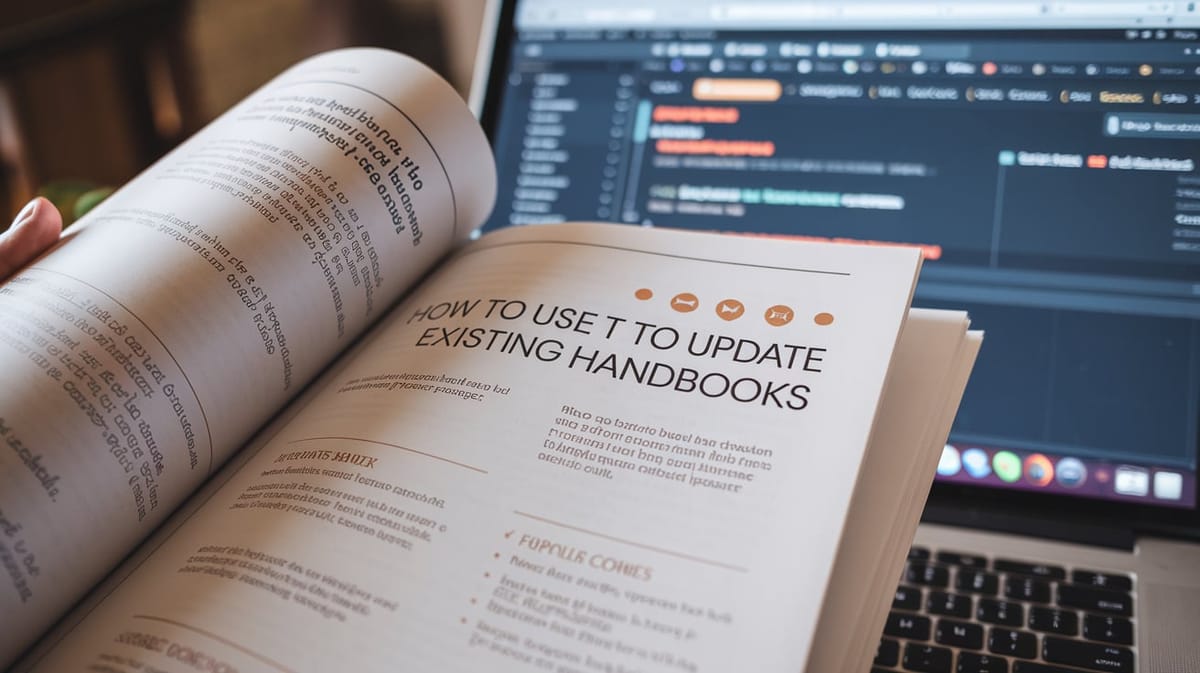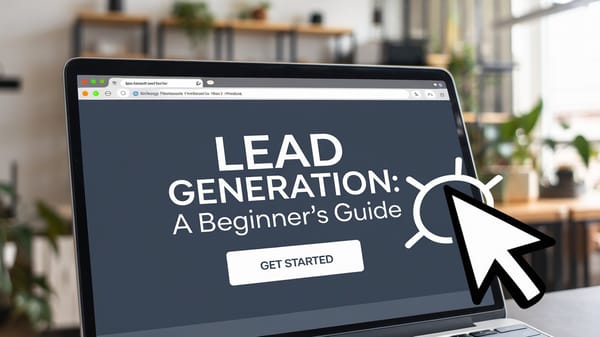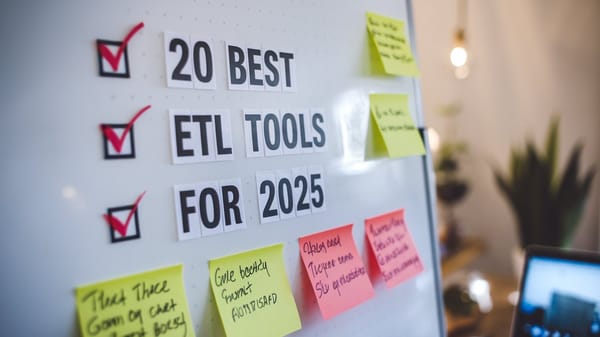How to use chatgpt to update existing handbook

Leveraging ChatGPT for Updating Existing Handbooks
In the rapidly evolving landscape of artificial intelligence, tools like ChatGPT have emerged as transformative assets for various professional domains, including Human Resources (HR). As organizations strive to maintain up-to-date and comprehensive handbooks, integrating AI solutions such as ChatGPT can significantly streamline the process. This report delves into the methodologies and benefits of using ChatGPT to update existing handbooks, ensuring they remain relevant and effective in communicating company policies and procedures.
ChatGPT, developed by OpenAI, is a sophisticated language model designed to generate human-like text based on the input it receives. Its capabilities extend beyond simple text generation, offering functionalities that can enhance the quality and clarity of written documents. By leveraging ChatGPT, HR professionals can efficiently update handbooks, incorporating the latest policy changes and ensuring consistency in tone and style. This integration not only saves time and resources but also enhances the accessibility and engagement of the handbook content.
One of the primary advantages of using ChatGPT for handbook updates is its ability to process and analyze large volumes of text quickly. This allows for the rapid identification of outdated information and the seamless incorporation of new content. Additionally, ChatGPT can be trained on specific datasets, such as existing company policies, to generate content that aligns with organizational standards and expectations.
Moreover, ChatGPT's interactive capabilities can be harnessed to create dynamic and user-friendly handbooks. For instance, by integrating ChatGPT into digital platforms, employees can easily navigate through policies and receive instant updates on any changes. This approach not only improves the user experience but also ensures that employees have access to the most current information at their fingertips.
For organizations looking to implement ChatGPT in their handbook update processes, it is crucial to define clear objectives and provide the AI with comprehensive context. This includes gathering existing policies and compliance checklists, which ChatGPT can use as a reference to build upon. By using precise and direct prompts, HR professionals can guide ChatGPT to produce targeted and useful content, ultimately enhancing the handbook's effectiveness.
Leveraging ChatGPT for Editing and Proofreading
Enhancing Text Clarity and Readability
ChatGPT, developed by OpenAI, is a powerful tool for enhancing the clarity and readability of text. It can analyze sentence structure, coherence, and the overall narrative arc of a document, making it an invaluable asset for editing and proofreading tasks. By leveraging its capabilities, users can transform a rough manuscript into a polished piece of writing. ChatGPT can suggest improvements in sentence structure, ensuring that the content is accessible and enjoyable for the reader. This is particularly useful for writers who aim to maintain a consistent tone and style throughout their work. For more details on how ChatGPT can improve readability and flow, refer to Platen AI's post on advanced editing techniques.
Addressing Grammar and Style Nuances
Beyond basic grammar checks, ChatGPT excels in addressing the nuances of style and tone. It can identify awkward phrasings and inconsistencies, offering suggestions that align with the intended audience's expectations. This capability is crucial for writers who need to ensure that their content resonates with their readers. For instance, ChatGPT can help refine a paragraph to align with a professional audience by suggesting more formal language or adjusting the tone to be more authoritative. This feature is highlighted in Inboom AI's guide on using ChatGPT for editing and proofreading.
Streamlining the Editing Process
The integration of ChatGPT into the editing process can significantly streamline workflows. By automating repetitive tasks such as identifying grammatical errors and suggesting stylistic improvements, ChatGPT allows writers to focus on more strategic aspects of content creation. This efficiency is particularly beneficial for content creators who need to produce high-quality work under tight deadlines. As noted by Matt Giaro, using ChatGPT for proofreading can turn a "shitty first draft into a polished diamond," emphasizing the tool's ability to enhance the overall quality of writing.
Customizing Editing for Specific Needs
ChatGPT can be fine-tuned to meet specific editing requirements, making it a versatile tool for various writing projects. By training the model on a dataset of existing documents, users can customize ChatGPT to generate content that adheres to specific guidelines or templates. This customization is particularly useful for businesses that need to maintain a consistent brand voice across multiple documents. For example, companies can use ChatGPT to create user manuals that are both informative and engaging, as discussed in AI Contentfy's blog on creating compelling user manuals.
Overcoming Writer's Block and Enhancing Creativity
In addition to its technical capabilities, ChatGPT serves as a creative aid, helping writers overcome writer's block and generate new ideas. By providing prompts and suggestions, ChatGPT can inspire writers to explore new directions in their work. This feature is particularly beneficial for creative writers who need to maintain a steady flow of ideas. As highlighted in Inboom AI's article, ChatGPT's flexibility makes it an invaluable companion in the digital age of content creation, bridging the gap between initial drafts and polished, ready-to-publish content.
Improving Document Structure and Flow
ChatGPT can also assist in improving the overall structure and flow of a document. By analyzing the logical progression of ideas, ChatGPT can suggest reordering sections or paragraphs to enhance coherence and ensure that the content follows a clear and logical path. This capability is essential for writers who need to present complex information in an easily digestible format. For more insights on how ChatGPT can enhance document structure, refer to Platen AI's post on crafting content with precision.
Enhancing SEO and Web Readability
For content intended for online publication, ChatGPT can optimize text for search engine optimization (SEO) and web readability. By suggesting keyword placements and adjusting sentence length, ChatGPT ensures that content is both engaging for readers and optimized for search engines. This dual focus on readability and SEO is crucial for writers who aim to maximize the reach and impact of their content. As noted by Matt Giaro, making content scannable and inviting is key to capturing and retaining the attention of online audiences.
Conclusion
Updating Employee Handbooks with ChatGPT
Identifying Outdated Content
One of the primary steps in updating employee handbooks using ChatGPT is identifying outdated or insufficient sections. ChatGPT-4, with its advanced language processing capabilities, can assist HR consultants by analyzing the current content and suggesting areas that may require updates. This process involves providing the model with specific prompts, such as "Identify sections that need updating due to recent legislative changes." By doing so, ChatGPT can highlight sections that may not align with current legal standards or company policies, ensuring the handbook remains compliant and relevant (Devset.ai).
Generating Updated Content
Once outdated sections are identified, ChatGPT can generate updated content based on the latest legal requirements and industry best practices. The model can be prompted with specific requests, such as "Update our remote work policy to reflect new regulations." This capability allows HR professionals to efficiently incorporate changes without extensive manual research and writing. ChatGPT's ability to generate coherent and context-aware text ensures that the updated content is both accurate and relevant (Devset.ai).
Ensuring Legal Compliance
Legal compliance is a critical aspect of employee handbooks. ChatGPT-4 can assist in ensuring that the handbook adheres to current labor laws and regulations. By staying informed about changes in legislation, ChatGPT can suggest legally sound policies and guidelines. This feature is particularly beneficial for HR consultants who need to maintain compliance across multiple jurisdictions. The model's extensive training data allows it to provide up-to-date recommendations, reducing the risk of non-compliance (Devset.ai).
Enhancing Accessibility and Engagement
Employee handbooks should be accessible and engaging to ensure employees understand and adhere to the policies outlined. ChatGPT-4 can generate language that is clear and straightforward, avoiding unnecessary jargon and legalese. This approach makes the handbook more user-friendly, allowing employees to easily comprehend the information. Additionally, ChatGPT can suggest formatting options, such as bullet points and headings, to enhance readability and engagement (Devset.ai).
Streamlining the Update Process
The process of updating employee handbooks can be time-consuming and resource-intensive. ChatGPT-4 streamlines this process by automating various stages of document generation. By leveraging its advanced language generation capabilities, HR professionals can focus on higher-value tasks, such as strategy and employee development. The model's ability to quickly generate and revise content saves time and effort, making the update process more efficient and cost-effective (Devset.ai).
Maintaining Consistency and Alignment
Consistency in tone, style, and structure is essential for effective communication in employee handbooks. ChatGPT-4 can help maintain this consistency by generating content that aligns with the organization's values and expectations. By providing prompts that specify the desired tone and style, HR consultants can ensure that the handbook reflects the company's culture and communicates its policies effectively. This consistency enhances the overall coherence of the document, making it a reliable resource for employees (Devset.ai).
Facilitating Distribution and Accessibility
Once the employee handbook is updated, ChatGPT-4 can assist in formatting and organizing the document for optimal distribution. The model can suggest suitable formats for sharing the handbook, such as online portals, PDFs, or printed documents. This flexibility allows organizations to choose the medium that best suits their needs, ensuring that employees have easy access to the handbook. Additionally, ChatGPT can provide recommendations on how to effectively communicate updates to employees, further enhancing accessibility and compliance (Devset.ai).
Leveraging AI for Continuous Improvement
Integrating ChatGPT into HR Processes
Identifying and Updating Outdated Content
Integrating ChatGPT into HR processes for updating employee handbooks begins with identifying outdated content. ChatGPT can assist HR professionals by analyzing existing handbook sections and highlighting areas that may require updates due to changes in legislation, company policies, or industry standards. By using specific prompts, such as "Identify outdated sections in our employee handbook," HR teams can leverage ChatGPT's natural language processing capabilities to pinpoint content that needs revision. This process ensures that the handbook remains relevant and compliant with current regulations (Devset.ai).
Generating Updated Content
Once outdated content is identified, ChatGPT can generate updated text that aligns with the latest legal requirements and industry best practices. HR professionals can provide ChatGPT with prompts like "Update our remote work policy" to receive suggestions for revisions. This capability allows HR teams to efficiently incorporate new policies or modify existing ones, ensuring that the handbook reflects the organization's current operational environment. The AI's ability to produce coherent and context-aware text streamlines the update process, saving time and resources (Employee Management World).
Ensuring Legal Compliance
Legal compliance is a critical aspect of maintaining an employee handbook. ChatGPT can assist HR professionals in ensuring that all handbook content adheres to relevant laws and regulations. By integrating legal databases and compliance checklists into the AI's training data, HR teams can use ChatGPT to cross-reference handbook content with legal requirements. This integration helps prevent potential legal issues and ensures that the organization remains compliant with labor laws and industry standards (Workable).
Enhancing Accessibility and Engagement
An employee handbook should be accessible and engaging for all employees. ChatGPT can help HR teams enhance the readability and engagement of handbook content by suggesting user-friendly formats and language. For instance, the AI can recommend hierarchical structures, bullet points, and headings to improve document navigation. Additionally, ChatGPT can provide insights into the most suitable formats for distributing the handbook, such as online portals, PDFs, or printed documents, ensuring that employees can easily access and understand the information (Devset.ai).
Streamlining the Update Process
The integration of ChatGPT into HR processes significantly streamlines the handbook update process. By automating text generation and revision tasks, HR professionals can focus on higher-value activities, such as strategic planning and employee engagement. ChatGPT's ability to quickly analyze and summarize vast amounts of data allows HR teams to make informed decisions with greater speed and accuracy. This efficiency reduces the time and effort required to maintain an up-to-date employee handbook, ultimately enhancing the overall HR function (Darwinbox).
Maintaining Consistency and Alignment
Consistency and alignment with organizational goals are essential for an effective employee handbook. ChatGPT can assist HR teams in maintaining a consistent tone and style throughout the document, ensuring that it aligns with the company's culture and values. By providing clear and direct prompts, HR professionals can guide ChatGPT to produce content that reflects the organization's voice. This alignment enhances the handbook's effectiveness as a communication tool and reinforces the company's brand identity (LinkedIn).
Facilitating Distribution and Accessibility
Once the handbook is updated, ChatGPT can aid in its distribution and accessibility. The AI can suggest the most effective channels for sharing the document with employees, whether through digital platforms or physical copies. By considering factors such as employee preferences and technological capabilities, ChatGPT ensures that the handbook reaches all members of the organization. This accessibility is crucial for fostering a well-informed workforce and promoting compliance with company policies (Devset.ai).
Leveraging AI for Continuous Improvement
The integration of ChatGPT into HR processes is not a one-time effort but an ongoing journey. HR teams can continuously leverage AI to monitor and improve the employee handbook. By regularly updating the AI's training data with new legal requirements and industry trends, HR professionals can ensure that the handbook remains current and relevant. Additionally, ChatGPT can facilitate feedback collection from employees, allowing HR teams to identify areas for improvement and make data-driven decisions to enhance the handbook's effectiveness (SSRN).





